Jaunųjų mokslininkų darbai eISSN 1648-8776
2022, vol. 52 (2), pp. 29–37 DOI: https://doi.org/10.15388/JMD.2022.2.3
Vibraharp Bag: A Percussion Keyboard Instrument Bar Bag and Method of Its Use
Vibraharp: perkusinio-klavišinio instrumento klaviatūros dėklas ir jo naudojimo būdas
Marius Šinkūnas
Lithuanian Academy of Music and Theatre
Email: marius.sinkunas@lmta.lt
Summary. The present invention (Vibraharp bag, LT6937B) is a keyboard bag for a percussion keyboard instrument (vibraphone, marimba, xylophone, or the like) for the safe operation and transportation of the keyboard, which is the most essential and expensive component of this class instruments. Unlike known bags for a similar purpose, this bag uses special internal key tabs which, when placed on the keyboard, inserts into the gaps between adjacent keys, thus separating them and preventing them from coming into mutual contact, under various operating and transport conditions. This bag helps to protect the keyboard of the instrument from unwanted physical impact and damage, and allows for more convenient and efficient mounting and unmounting of the keyboard during assembly and disassembly of the instrument.
Keywords: vibraharp bag, keyboard, bag, vibraphone, marimba, xylophone.
Santrauka. Šis išradimas (LT6937B) – tai perkusinio klavišinio instrumento (vibrafono, marimbos, ksilofono, ar analogiško) klaviatūros dėklas, skirtas saugiai eksploatuoti ir transportuoti klaviatūrą, kuri yra esminis ir brangiausias šios klasės instrumentų komponentas. Skirtingai nuo žinomų panašios paskirties dėklų, šio dėklo konstrukcijoje yra panaudoti specialūs vidiniai klavišų skirtukai, kurie, uždėjus dėklą ant klaviatūros, įsiterpia į tarpus tarp gretimų klavišų, taip atskirdami juos ir neleisdami jiems susiliesti tarpusavyje, įvairiomis eksploatacijos ir transportavimo aplinkybėmis. Šis dėklas padeda apsaugoti instrumento klaviatūrą nuo nepageidaujamo fizinio poveikio bei sugadinimo, ir leidžia patogiau bei efektyviau sumontuoti ir išmontuoti klaviatūrą, instrumento surinkimo ir išardymo metu.
Reikšminiai žodžiai: dėklas vibraharp, klaviatūra, dėklas, vibrafonas, marimba, ksilofonas.
Received: 2023-06-08. Accepted: 2023-10-10
Copyright © 2022 Marius Šinkūnas. Published by Vilnius University Press. This is an Open Access article distributed under the terms of the Creative Commons Attribution Licence, which permits unrestricted use, distribution, and reproduction in any medium, provided the original author and source are credited.
Introduction
Relevance of the topic. The storage, transportation and means of musical instruments is an important technical field. Many musical instruments are large, heavy, and sensitive to physical and environmental influences. Also, instruments of good quality, made by well-known craftsmen and intended for professional performance are expensive. On the other hand, the concert activities of professional musicians are inseparable from traveling and transporting musical instruments, their use and storage in unforeseen conditions, which can sometimes be harmful or even destructive to the instrument.
Each class of musical instruments has specialized technical solutions and tools that allow for the best protection of that particular class or even a specific type of instrument. This invention relates to protective measures for keyboard percussion instruments. The class of percussion-keyboard instruments includes several instruments: vibraphone, marimba, xylophone, metallophone (glockenspiel), bells and others.
A percussion-keyboard instrument usually consists of an instrument stand (frame), a set of percussion keys (plates) (“keyboard”), and percussion instruments, usually sticks with soft tips (viper, mallets). Different instruments of this class may also have additional sound-shaping elements, for example, the vibraphone and marimba have resonators that amplify the sound emitted by the percussion key and shape the timbre and other characteristics of the sound. The mentioned percussive keys are the essential elements of these instruments, into which the sound of the instrument is obtained by inserting a stick with a soft tip. Depending on the type of instrument, percussion keys can be made of metal, wood, ceramic, plastic, or other materials suitable for producing sound.
A vibraphone or marimba key, which looks like a simple plate, actually has a special construction and is made with extreme precision. For example, vibraphone keys are made from aluminum or metal alloy (may be silver alloy) cut into plates of predetermined length. Two holes are drilled in the plates, across their width, through which the keys are strung to the keyboard with cords, and the keyboard is suspended by these cords from the brackets in the frame of the instrument, thus allowing the keys to hang freely and sound. Hanging keys are separated from each other, usually by equal spaces. In order to obtain a longer ringing of the keys (self-resonance), the mentioned holes are drilled through the nodal points of minimum amplitude of the plate, around which the plate vibrates. These points are approximately 22.4 of the plate length from each end of the plate. Likewise, the vibraphone or marimba key has an arched shape on its lower side to lower the pitch: this makes it possible to shorten the highest low keys. Also, this arch gives the key a complex harmonic mode of vibration and a specific mellow sound, for example, the key F3 sounds the fundamental tone of F3, along with the overtones of F5 and A6. Also, due to the curvature of the arch, the aforementioned nodal points are moved closer to the ends of the key (22.4% of the length from each end of the plate). After the key plate is manufactured, it is then fine-tuned. If the key shape is flat, the ringing is tuned by scraping/grinding the metal from the ends of the key. Additionally, the secondary and tertiary tones of the key can be tuned by sanding/grinding material in various other areas of the key (arch).
Similar principles apply to the manufacture of marimba keys. The main difference: marimba keys are made of wood, usually expensive rosewood.
All this leads to the fact that the keys/keyboards of the mentioned instruments are complex, they create the sound of the instrument, and make up a significant part of the price of the instrument. Meanwhile, transporting the instrument, careless use or even a slight physical shock (for example, hitting the keys during transportation) can significantly deteriorate the sound of the instrument, and the instrument may not even be suitable for professional performance.
Storage-transport cases for percussion-keyboard instruments are known, which accommodate the instrument or its keyboard. The closest source for this invention, Yamaha Soft Cases for YM-5100A Marimba, (https://www.lonestarpercussion.com/Cases-Bags/Keyboard-Soft-Cases-Bags/ Yamaha-PCS-YM5100A-Soft-Cases-for-YM -5100A-Marimba.html) [1] provides a set of cases in which the wooden plates of the marimba keys are placed side by side without gaps on a fabric flexible tray that is rolled together with the plates into a roll and fastened ([1], https://www .lonestarpercussion.com/CasesBags/Keyboard-Soft-Cases-Bags/Yamaha-PCS-YMBBL-Soft-Sided-Bar-Bag-forLarge-Marimba-Bars-4.3-to-5.0-Octave-Range and https://usa .yamaha.eom/files/download/other_assets/6/973356/45706_concertpercus sion_cat.pdf). Depending on the instrument, if the keys are light in weight, physical damage during transport is unlikely. However, when transporting a much heavier metal vibraphone keyboard, the case of this design may no longer protect the keys from stronger impacts and collisions.
Pearl, a manufacturer of musical instruments, marimbas and their cases (https://pearldrum.com/products/adams/marimbas/) [2], puts the marimba keyboards in a case together with the instrument frame. In this case, even after packing the instrument, it must be handled with care and the risks of damage still remain significant.
Among the patent sources, one can find patents for inventions about percussion keyboard instruments, as well as various cases and holders for musical instruments. For example, in various patents – US1575960, US3138986A, US4411187A, USD164702S, “Portable component marimba” US9406287B2, “Support post for a suspended tone bar” GB2564440A, “Musical instrument stand” JP6579130B2, “Folding marimba US10325577B1” and other related ones. However, it was not possible to find a patent source about such purpose cases for percussion keyboards, which would be a closer analogue to this invention than the one mentioned [1].
Technical level documents reviewed indicate that cases designed for transportation, handling and storage of percussion keyboards may not be sufficiently secure, especially if the keyboard is larger, heavier and more expensive. The present invention discloses a case of improved design that allows for significantly safer storage, transportation and operation of a keyboard for a percussion-keyboard instrument.
Aim of the research. This article aims to introduce an invention – a vibraharp bag: a percussion-keyboard instrument bar bag and method of its use.
The following objectives were set for implementation of the research:
1. To introduce the purpose of the invention.
2. To deliver the essence of the invention.
3. To explain the method of its use.
Methods. During the research, the methods of analysis, synthesis and summarising of the closest inventions and their patents as well as the descriptive method were used
Technical field, purpose and essence of the invention
This invention (LT6937B) belongs to the technical field of equipment for musical instruments and their accessories. More specifically, it is a special case designed to cover, protect, pack and safely transport the keyboard of a percussion-keyboard instrument (vibraphone or marimba).
The purpose of the invention is to effectively protect the keyboard and keys of a percussion-keyboard instrument (vibraphone, marimba, xylophone, and similar) during operation, transportation or long-term storage of the instrument.
Technical solution – a case design for a percussion keyboard has been created, in which, unlike other known material and padded cases for this purpose, in addition, special (material and padded) key tabs are used inside the case, which, when the case is placed on the keyboard of the instrument, are inserted into the spaces between the keys, thus separating them and preventing them from direct contact, in various operating and transportation situations.
In this case, each percussive key is separated from each other by the mentioned tab, so they do not rub or hit each other, neither on the sides nor on the flat surface. Another important effect is that the necessary silence can be ensured during assembly and disassembly of the instrument. For example, if the mentioned instrument assembly-disassembly works are performed behind the scenes, and the performance of other performers is taking place on the stage at the same time. Removing and installing the metal vibraphone keyboard and the collisions between the keys causes an audible sound backstage and on stage, which is undesirable during the performance. Another effect is that when assembling and disassembling the vibraphone, the said tabs maintain a fixed distance between the keys, which remains the same or similar to what it is when the keys are placed on the frame of the vibraphone. Therefore, during the installation of the keyboard, it is no longer necessary to adjust the arrangement of the keys –to pull and push them, placed on the keyboard’s metal brackets, with a high risk of injuring their lower surface.
Detailed description of the invention
The case (8) of the keyboard (2) of the percussion-keyboard instrument (1) is composed of a material, preferably slightly padded base (9). The shape and size of the base (9) can be varied, but in the best embodiment, the base of the case (9) corresponds to the shape and size of the extended keyboard (2) of the instrument with keys (3) and connecting cords (5). The base of the case (9) can be slightly larger than the unfolded keyboard (2).
The case has special key tabs (10) attached (sewn) to its base (9). A tabbed case is shown in Figures 1 and 2. Each such key tab (10) corresponds to a space (7) on the keyboard (2) between two adjacent keys (3). That is, there are as many key tabs (10) in the tray (8) as there are spaces (7) between the keys (3) on the keyboard (2). The width of each tab (10) corresponds to the distance between the transverse holes (4) in the adjacent keys (3) it separates. The width of the tab (10) can be close to or less than this distance between the holes. The height of the tab (10) is not less than the maximum thickness of the plate of the key (3), or it can be greater. Additionally, one more (or two) case edge tabs (10.1) attached from the other side of the case (Figure 2) are provided to separate the keyboard tension metal spring (12) from the adjacent keys. A case placed over the keyboard is shown in Figure 3.
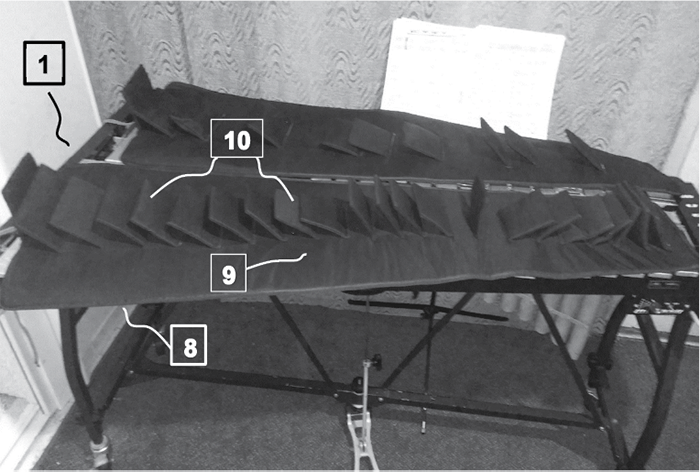
Figure 1. Keyboard bag with key-separating tabs visible on its surface

Figure 2. Keyboard bag with the key-separating tabs (a schematic drawing)
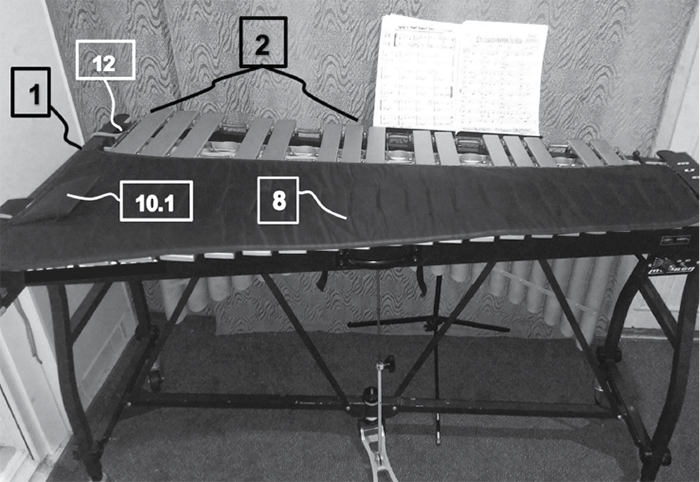
Figure 3. Placing the bag on the keyboard, by inserting the key tabs into the gaps between
the keys
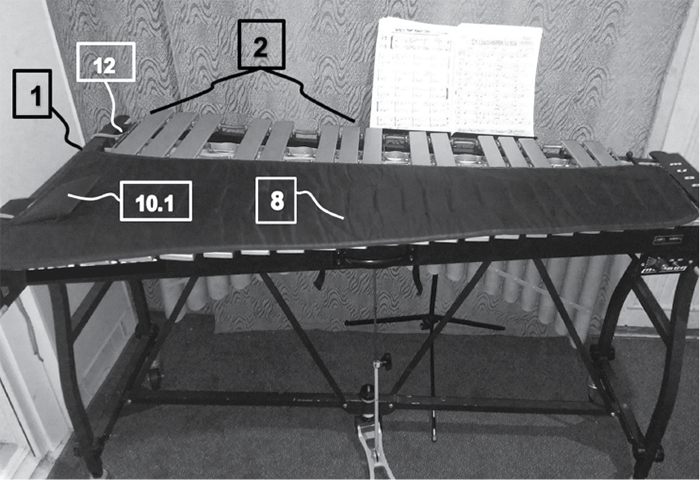
Figure 4. The bag that covers the surface of the keyboard and protects the keyboard when the instrument is not in use
The case (8) may have fastening means (11) (Figure 2) that allow the case (8) rolled together with the keyboard (2) to be fastened and held in the form of a compact roll (Figures 5 and 6).
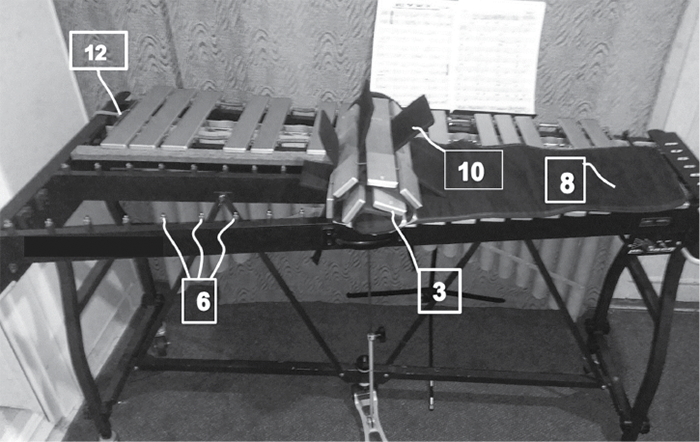
Figure 5. The bag together with the keyboard: being rolled into a roll, shown a half-rolled roll
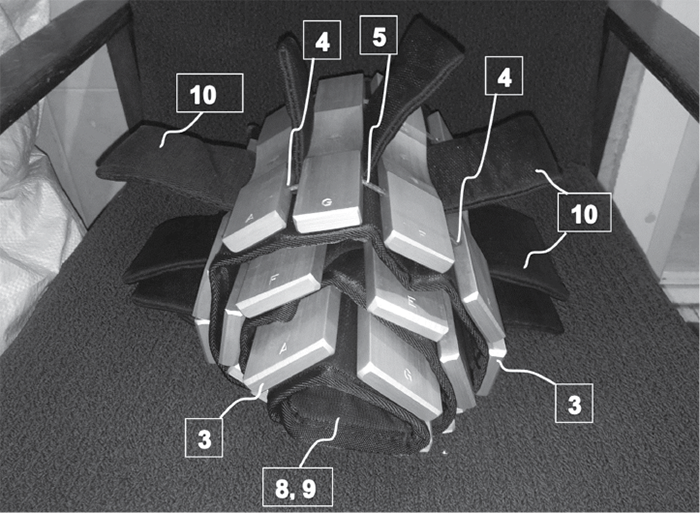
Figure 6. The bag with the keyboard: fully wrapped into a compact roll, suitable for safe storage and transportation of the keyboard
The base of the case (9) and the key tabs (10) are made of a strong and rigid material suitable for musical instrument cases. Also, inner padding can be used in the case and tabs, for example, from non-woven technical fabric (sintepon), cotton, or other similar material.
The thickness of the key tabs (10), including the material layer and the inner padding, can be selected so that each tab (10) fits rigidly into the space between the two keys (3) of a width common to the keyboard (2) installed on the instrument (1).
The case (8) can be used to cover and protect the keyboards and keys of the following instruments: vibraphone, marimba, xylophone, metallophone, bells, or other similar instruments. The case (8) is intended and most suitable for the following main cases of use of the instrument:
1. Reliably cover the keyboard (2) of the assembled instrument (1) when the instrument is not in use, for example, if it is left unattended until the next day. The key tabs (10) are inserted into the gaps (7) of the keys (3) and reliably hold the case (8) on the surface of the keyboard (2), preventing it from sliding off the keyboard (Figure 4);
2. Safely store the keyboard wrapped in a compact roll (Figures 5 and 6);
3. Safely transport the keyboard wrapped in a compact roll.
The invention is not limited to the instruments, materials, and functionality features of the keyboard case mentioned in this description. A keyboard case with key tabs, for this purpose, can also be used in other suitable cases to protect musical instruments.
Conclusions
1. It is a revolutionary invention in the field of melodic percussion instruments.
2. This case ensures the longevity of the instrument.
3. When placing the keyboard on the frame, the keyboard bag keeps the exact distances between each key, so you do not have to push the keys when trying to pin each one into its place.
4. It protects the keys from wear and tear due to friction during transportation.
5. It allows quietly rolling the keyboard-percussion instrument. The wrapping makes absolutely no noise, so you can disassemble and reassemble the instrument even when a concert is taking place.
DRAWINGS – reference numerals:
1 – keyboard-percussion instrument (vibraphone);
2 – the keyboard;
3 – keys of the keyboard;
4 – transverse holes in plates of the keys;
5 – cords connecting the keys into the keyboard through the transverse holes;
6 – keyboard holders on the instrument frame;
7 – spaces between keys;
8 – keyboard bag;
9 – base of the bag;
10 – key-separating tabs in the bag for key separation and protection;
10.1 – side key-separating tab on the base, to separate the keyboard tension spring from the keys;
11 – means for clasping the bag;
12 – tensioning spring of the keyboard.
List of non-patent citations
[1] “Yamaha”, Soft Cases for YM-5100A Marimba: https://www.lonestarpercussion.com/Cases-Bags/Keyboard-Soft-Cases-Bags/Yamaha-PCS-YM5100A-Soft-Cases-for-YM-5100A-Marimba.html
[2] “Pearl” marimbas and bags thereof: https://pearldrum.com/products/adams/marimbas/
Patent Citations
US1575960A, 1926-03-09, Bar Zim Toy Mfg Co Inc, Xylophone.
US3138986A, 1964-06-30, Scientific Industries, Vibraphone.
US4411187A, 1983-10-25, Roper Daleth F, Composite marimba bars.
JP2008090095A, 2008-04-17, Kazuhito Komatsu, Keyboard protection device of keyboard instrument, and protection method.
US9406287B2, 2016-08-02, John Glowka, Portable component marimba.
JP6579130B2, 2019-09-25, Yamaha Corporation, Musical instrument stand.
GB2564440A, 2019-01-16, K H S Musical Instr Co Ltd, Support post for a suspended tone bar.
KR101961243B1, 2019-03-22, Jung, Sun Hwa Woo, Xylophone.
US10325577B1, 2019-06-18, Jim Melhart Piano and Organ Company, Folding marimba.